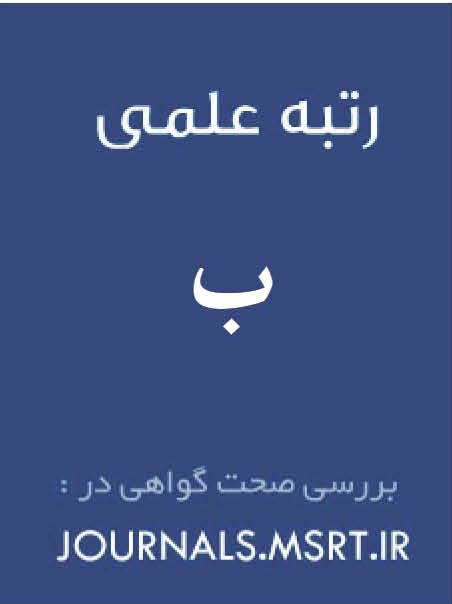کالبدشکافی رویکرد دینی در مواجهه با شبکه چالشهای امنیتیِ هوش مصنوعی
کلمات کلیدی:
هوش مصنوعی, دین, اخلاق حرفه ای, امنیت اجتماعی, فقهچکیده
این پژوهش با هدف کالبدشکافی رویکرد دینی در مواجهه با شبکه چالشهای امنیتیِ هوش مصنوعی، انجام شده است. در سالهای اخیر فناوری پیشرفته هوش مصنوعی به سرعت جای خود را در زندگی بشر باز کرده و به ابزاری اساسی در زندگی بدل گشته است. این فناوری به عنوان یکی از تکنولوژیهای مبنایی، دارای تواناییهای منحصر بفردی است که قادر به ایجاد تحولی بزرگ در علوم مختلف میباشد. با این وجود، هنوز ابهامات زیادی درباره رویکردهای مبتنی بر آموزههای دینی نسبت به هوش مصنوعی وجود دارد. این پژوهش با استفاده از روش توصیفی- تحلیلی به این سوال پاسخ میدهد که رویکرد فقه نسبت به پیامدهای مثبت و منفی بکارگیری هوش مصنوعی چیست؟ یافتههای این نوشتار نشان میدهد فقه به عنوان یک راهنمای اخلاقی و شرعی قادر است تحولی جدی در حوزه قوانین و مقررات بین المللی بکارگیری این فناوری و همچنین اخلاق حرفهای کاربران آن، به ویژه در زمینه جلوگیری از تهدیدات امنیتی و حفظ صلح عمومی ایجاد کند.
دانلودها
مراجع
Abdi, B., & Samimi, M. (2010). The Role of Expert Systems in the Management of Military Organizations. Military Management(40), 177-198.
Aghajani, M. (2021). Artificial Intelligence from Basic to Advanced. Nasl-e Roshan.
Albokarami, H. (2024). A Review of the Role of Artificial Intelligence in Patient Treatment Management in Hospitals: From Admission to Treatment. Second International Congress on Science, Engineering, and New Technologies,
Alipour, M. (2009). Introduction to the History of the Science of Principles. Al-Mustafa (PBUH) International Center for Translation and Publishing.
Alizadeh, A., & Kaviani, M. M. (2011). The Right to Individual Security in the Constitution of the Islamic Republic of Iran. 41(4(4)), 257-272.
Bahrani, S. Y. (2002). Al-Durar al-Najafiyya (Vol. 3). Mustafa (PBUH) Heritage Revival Company.
Barzegar, M., & Gholamhossein, E. (2019). Criminal Liability of the Autonomous Vehicle User for Injuries Caused by It. Criminal Law Research(30), 201-229.
Darikvand, F. Z. (2022). The Right to Education from the Perspective of Imamiyyah Jurisprudence and Iranian Law. International Journal of Legal Studies, 6(21).
Desouza, K. (2002). Managing Knowledge With Artificial Intelligence. Westport. https://doi.org/10.5040/9798216977254
Farahani, A., & Mirzadeh Kouhshahi, N. (2022). Artificial Intelligence, Human Rights Violations, and Liability. Iran.
Farajollahi, M. (2015). Development of a Legal Expert System for Solving Inheritance Issues in Iran Faculty of Engineering, Tarbiat Modares University]. Tehran.
Firoozabadi, M. i. Y. q. (1994). Qamus al-Muhit (Vol. 4). Dar al-Kutub al-Ilmiyyah.
Gharati, M. (2004). Tafsir Noor (11 ed., Vol. 10). Cultural Center for Quran Lessons.
Ghasempour, A., & Safaei, N. Z. (2024). Legal Issues Arising from Artificial Intelligence in Labor Law. Scientific Journal of Government and Law, 5(1(15)), 59-80.
Ghiamatyoun, M. H. (2015). Intrusion Detection Using Data Mining Methods Faculty of Industrial Engineering, K. N. Toosi University of Technology]. Tehran.
Hajializadeh, A., & Nasiri, F. (2021). Artificial Intelligence and E-Commerce from the Perspective of Jurisprudence, Law, and Global Trade. Journal of New Approaches in Islamic Studies(9), 79-122.
Hakim, S. M., & Ebrahimi, S. H. (2024). A Jurisprudential and Legal Review of the Deprivation of Citizen Security in Artificial Intelligence. Islamic Jurisprudence and Legal Research Journal(72), 10-74.
Izadi, J., & Nezafati, T. (2024). An Examination of the Military and Political Threats and Opportunities of Artificial Intelligence on Iran's National Security. International Relations Studies(67), 217-237.
King, T. C., Agarwal, N., Taddeo, M., & Wahbi, Z. (2023). Artificial Intelligence Crimes: An Interdisciplinary Analysis; Threats and Predictable Solutions. Civilizational Law, 6(18), 133-154.
Kulayni, M. i. Y. q., & Behnazhad, A. (1996). Usul al-Kafi. Arayeh Publications.
Mahdizadeh, S. (2017). Modeling and Predicting Some Parameters Used in Water and Agricultural Management Using AI Models and Integrating These Models with Stochastic Methods Faculty of Agriculture, Urmia University]. Urmia.
Makarem Shirazi, A. M. S. M. A.-D. S. d. (2008). Ethics in the Quran. Imam Ali ibn Abi Talib Publications.
Meshkini, A. (1995). Istilahat al-Usul wa Mu'azam Abhathiha (6 ed.). Al-Hadi.
Motahhari, M. (2015). General Islamic Sciences: Usul al-Fiqh and Fiqh. Sadra.
Motalabi Karbakandi, H. (2013). Analysis of Artificial Intelligence and Its Functions Compared to Human Thinking Faculty of Theology and Islamic Studies, University of Qom]. Qom.
Mousavi, R. (2000). Introduction to the Basics of Fiqh or Islamic Law. Danesh Shargh.
Nasr, H., & Rahmati, E. A. (2003). Ideals and Realities of Islam. Jami Publications.
Nazarpour, M., Mousavi, S. H. N., & Hosseini Shirvani, M. S. (2020). Application of Artificial Intelligence in Tax Auditing. Audit Knowledge Journal(81), 198-226.
Nikzad Dinan, H. (2020). The Economics of Artificial Intelligence: Future Consequences on Work. Bazkhord Journal(15).
Noori, M. E. (1999). Introduction to Fiqh. Ahsan al-Hadith.
Ragheb Isfahani. (1996). Mufradat Alfaz al-Quran (Translation of Mufradat Ragheb). Navid-e Islam Publications.
Rostami, M. (2022). Identifying and Introducing the Practical Capacities of Artificial Intelligence in the Development of Strategic Themes in Military Organizations. Strategic Defense, 20(78), 34-73.
Sadeghi, M., & Mehdi, N. (2019). Smart Contract Technology: A Tool for the Development of E-Commerce: Requirements and Policies. Journal of Technology Growth(61), 1-11. https://doi.org/10.52547/jstpi.20805.16.61.1
Sadoughi, F., & Abbas Sheikh, T. (2011). Application of Artificial Intelligence in Medical Decision-Making. Health Information Management(3), 440-445.
Saedi Razi, M. (2020). What Transformation Does Artificial Intelligence Bring to Jurisprudence and Principles? First National Conference on Artificial Intelligence and Islamic Sciences,
Saleh Abadi, R. (2019). Determining the Scope of Artificial Intelligence Research from the Perspective of Law and Public Interest Faculty of Law, Shahid Beheshti University.
Saraabadani, A. (2018). Artificial Intelligence and Expert Systems. Jaliz.
Sedighi, S. (2016). Physical Health in the Quran. National Conference on Health from the Perspective of the Holy Quran,
Tabarsi, F. i. H. (1985). Majma' al-Bayan fi Tafsir al-Quran. Dar al-Ma'arifa & Nasir Khosrow.
Tabatabai, M. H. (1995). Al-Mizan fi Tafsir al-Quran. Islamic Publishing Office of the Society of Seminary Teachers.
Tahanawi, M. (1997). Kashshaf Istilahat al-Funun. Dar al-Kutub al-Ilmiyya.
Valipour, A., & Esmaeili, M. (2021). Feasibility of Civil Liability for General Artificial Intelligence in Cases of Damage Under Civil Law. Contemporary Legal Thought Quarterly, 2(3), 1-8.
Vijeh, M. R. (2011). Legal Security as a Condition for Judicial Security. Rahbord, 20(58), 95-130.
Yousefi, A. A. (2005). Economic Justice from the Perspective of Islam with Specific Reference to the Liberal Capitalist System. Ketab-e Naqd(37), 51-72.
دانلود
چاپ شده
ارسال
بازنگری
پذیرش
شماره
نوع مقاله
مجوز
حق نشر 2025 معرفت و بصیرت اسلامی

این پروژه تحت مجوز بین المللی Creative Commons Attribution-NonCommercial 4.0 می باشد.








